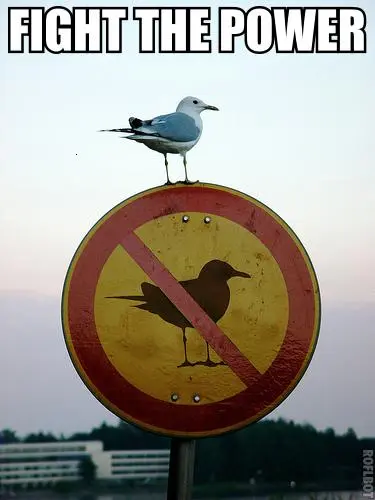My vehicle gets washed when it rains, and I live in the US southwest.
- 0 Posts
- 81 Comments
In my opinion, no. It is picked and consumed when the buds are still tight, if the head starts to loosen or the buds begin to open it has a more bitter taste to it.
5-10 steps ahead of them after they lapped them twice and going for a third. A lot of people just don’t seem to understand how much time and passion scientist put into their research.

 33·6 days ago
33·6 days agoFrom the research paper (behind the paywall) it appears they only tested cancer cells, shown below, and on mouse models. It’s been awhile since I’ve studied this, so I don’t know if the proteins involved are specific to cancer cells or not. If not I’d assume it would kill all cells. With the mouse models I assume they injected directly into the tumor for targeted treatment, but I didn’t dive into it that deep.
Paper link: https://faseb.onlinelibrary.wiley.com/doi/full/10.1096/fj.202500412R?saml_referrer
2.2 Cell Culture
Human monocyte-like THP-1 leukemia cells (THP-1, THP-1Asc-KO, THP-1Gsdmd-KO, THP-1-Null, THP-1-defCasp1, and THP-1-defNLRP3) [4, 21] were provided by Professor Li Sun’s lab (Institute of Oceanology, Chinese Academy of Sciences, Qingdao, China), and human liver cancer Huh7.5 cells were maintained in our lab. THP-1 cells and Huh7.5 cells were cultured in RPMI 1640 medium with 10% FBS, 100 U/mL penicillin, and 100 μg/mL streptomycin at 37°C in a 5% CO2 humidified incubator. All experiments were carried out with the same batch of cell lines between passages 2 and 8.
2.15 Xenograft Tumor Mouse Model
BALB/C nu-nu male mice, 4 weeks old, were obtained from Beijing Vital River Laboratory Animal Technology Co. Ltd. (Beijing, China). A total of 3 × 106 Huh7.5 cells were subcutaneously injected into the right fore flank of each nude mouse. The daily drug treatment began when the tumor size reached ~100 mm3 and continued for a further 2 weeks as follows: EPS3.9 (30 and 60 mg kg−1 d−1, intraperitoneal injection) dissolved in assisted solvent (PBS); Control groups were given the same volume of PBS. Body weight and tumor volumes were measured every day with a balance or with a vernier caliper. The tumor volume was calculated with the formula: 1/2 × [length × (width)2]. After treatment for 2 weeks, mice were sacrificed by decapitation and tumor tissues were collected for further analysis.
Don’t have open flames when opening that bad boy.
Actually an American, a lost treasure, Anthony Bourdain. Loved his shows.

 4·21 days ago
4·21 days agoblah blah blah…Epstein files

 47·29 days ago
47·29 days agoHow does it go?
Rules for thee, not for me.

 3·1 month ago
3·1 month agoA good book on this is: Free Culture: The Nature and Future of Creativity by Lawrence Lessig
Sister by another mister.

 53·3 months ago
53·3 months agoThat was definitely not a clean poop.
If you take into consideration the self-ionization of water, it’s both, at the same time.
2 H2O -> H3O+ + -OH

 5·4 months ago
5·4 months agoAnd they’ve spent more than that on these shitty ads, I’ve seen them several times on my local channels.

 4·4 months ago
4·4 months agoNot sure if this is a rhetorical questions, but I assume a statement like that comes from examples like the “Borderlands” movie. I’m not a gamer, but I remember seeing a lot of talk around the casting not being true to the game.
I live on the outskirts of Phoenix, AZ in a rural type setting. I’m on 1.5 acres, so a large lot, and my chickens are probably 150-200 feet from my house and I don’t hear them.

 4·4 months ago
4·4 months ago“Trump took in $240 million in bribes under
the guise of being for his inaugurationhis pay to play scheme”
You should give it a try, it’s a little work but not much for the peace of mind that you know exactly how you raised them. I’ve been raising chickens for about 5 years. I keep anywhere from 15-25 chickens, one rooster the rest hens. I raise Plymouth Barred Rock chickens, there decent dual purpose birds, decent egg layers and get to a decent weight for butchering, a bit on the small side compared to Cornish Cross, which are the large store birds.
I hatch my own replacements, keep the best and eat the rest. I’ve been trying to go with a 2 year cycle, where I cull all chickens 2 years old and older, if I gave one a reprieve, that’s where they usually max out on egg production it falls after that. So I end up with a range of ages in my flock from chick, to yearling, to mature 2-3 year old hens/rooster. The new hatching I grow them to about 16 weeks on 20% protein feed, I might go to 30% to see if I get better growth, then cull the ones I don’t want to keep. Those butchered at the 16 week I label them as fryers, they more tender and can be grilled of fried, older ones I label a stew birds.If you use high heat on old birds they get tough and chewy, not fun to eat. Made a mistake of letting a few roosters get to about 6 mounts old and butchered them, then grilled them up. They were still tough and chewy at that young age but that might be more due to their hormones kicking in.
Stew birds I break it down into individual parts and cook low and slow in a slower cooker for 6-8 hours with onions, carrots, garlic, parsley, thyme, black peppercorns, bay leafs and a splash of vinegar. Remove meat from bones and shredded chicken in all kinds of meals. I return the bones to the slow cooker and cook overnight adding water if needed to make homemade chicken broth.
Here’s a walk through tutorial for the butchering process if your interested.






Not monkey but rocky mountain oysters.